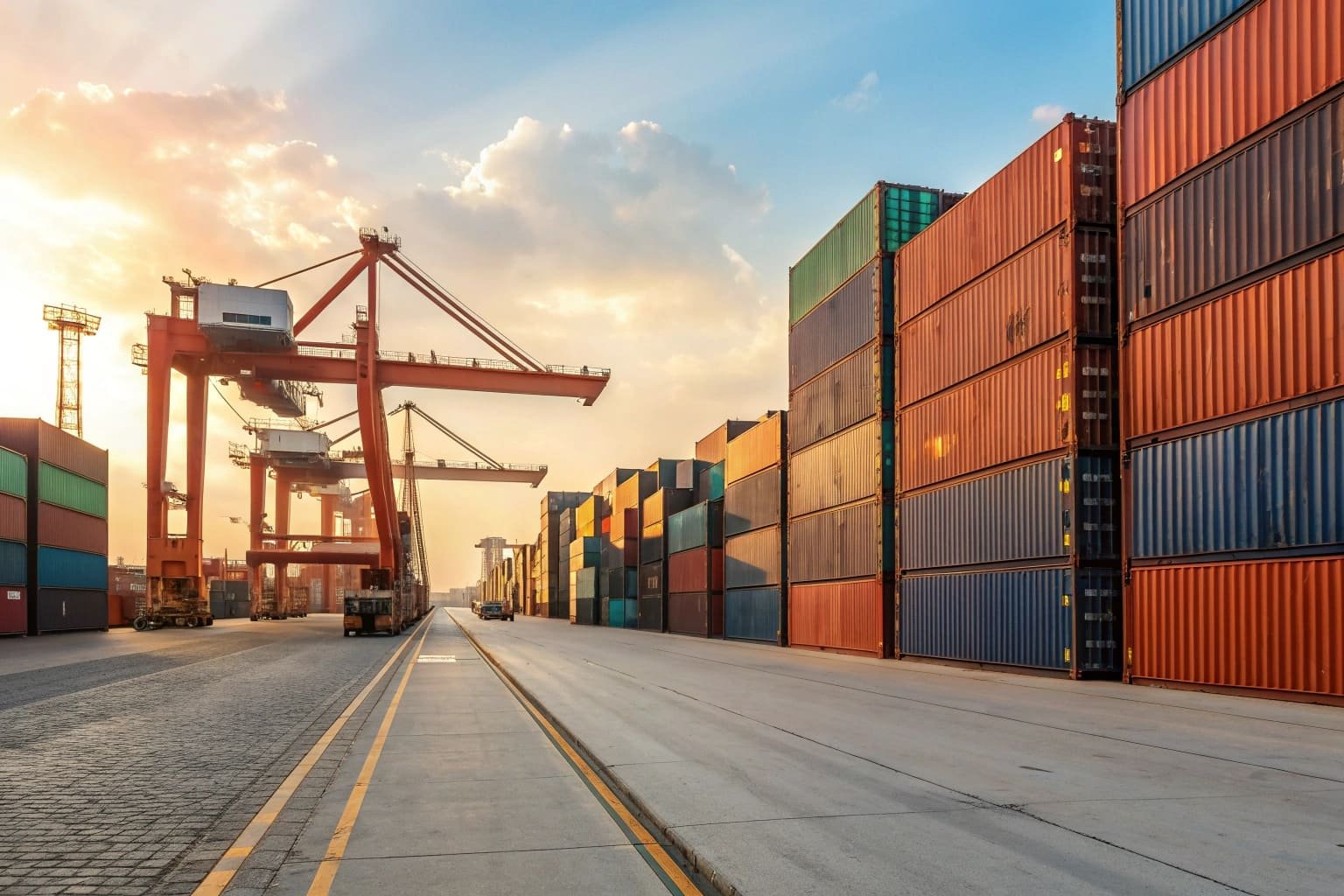Sea ports are essential to the economic framework of the United States, serving as pivotal gateways for international trade and commerce. They facilitate the movement of goods across borders, connecting the U.S. to global markets and playing a critical role in supply chains. The largest sea ports in the U.S. handle millions of containers and tons of cargo annually, directly impacting local economies and the national economy as a whole. This article explores the biggest sea ports in the USA, detailing their key metrics, significance, and the reasons they are vital to the nation's economy.
List of Top 15 Biggest Sea Ports in the USA
Port of Los Angeles, California

Known as “America’s Port,” the Port of Los Angeles is the largest port in North America. It serves as the primary gateway for approximately 20% of all incoming cargo for the U.S. This maritime giant spans 7,500 acres and boasts 25 cargo terminals, with major trade partners including China, Hong Kong, Japan, and South Korea.
Key metrics:
- Container volume: 10.66 million TEUs
- Annual cargo tonnage: 222 million metric revenue tons
- Total size: 7,500 acres
- Vessels handled: 1,867
- Direct and indirect employment: 1.6 million
Port of Long Beach, California

Adjacent to the Port of Los Angeles, the Port of Long Beach is the second busiest in the U.S. Known for its deep-water capabilities and efficient infrastructure, it is critical for transshipment and trade with Asia. The port has also made significant strides in sustainability initiatives.
Key metrics:
- Container volume: 8.1 million TEUs
- Annual cargo tonnage: 78 million metric revenue tons
- Total size: 3,200 acres
- Vessels handled: 1,300
- Direct and indirect employment: 575,000
Port of New York and New Jersey

This port complex is the largest on the East Coast and serves as a vital hub for international trade. Its strategic location connects the U.S. with Europe and other global markets, supporting various industries.
Key metrics:
- Container volume: 7.5 million TEUs
- Annual cargo tonnage: 120 million metric revenue tons
- Total size: 25,000 acres
- Vessels handled: 2,500
- Direct and indirect employment: 400,000
Port of Savannah, Georgia

The Port of Savannah is recognized for its rapid growth and efficient operations, serving as a major gateway for goods moving to and from the Southeast U.S. Its extensive intermodal transportation network allows for quick distribution throughout the region.
Key metrics:
- Container volume: 5.6 million TEUs
- Annual cargo tonnage: 38 million metric revenue tons
- Total size: 1,200 acres
- Vessels handled: 1,300
- Direct and indirect employment: 140,000
Port of Seattle, Washington

The Port of Seattle plays a key role in trade with Asia and is known for its commitment to environmental sustainability. The port has implemented various initiatives to reduce emissions and promote green practices.
Key metrics:
- Container volume: 3.5 million TEUs
- Annual cargo tonnage: 23 million metric revenue tons
- Total size: 1,200 acres
- Vessels handled: 1,600
- Direct and indirect employment: 42,000
Port of Norfolk, Virginia
The Port of Norfolk is the largest natural deep-water port in the U.S. Its strategic location along the Atlantic Coast makes it a key gateway for goods entering and exiting the Eastern Seaboard.
Key metrics:
- Container volume: 2.5 million TEUs
- Annual cargo tonnage: 30 million metric revenue tons
- Total size: 1,400 acres
- Vessels handled: 900
- Direct and indirect employment: 50,000
Port of Houston, Texas
The Port of Houston is vital for the oil and gas industry, acting as a hub for petrochemical products. Its extensive facilities support a diverse range of cargo, including bulk liquids and containers.
Key metrics:
- Container volume: 2.1 million TEUs
- Annual cargo tonnage: 263 million metric revenue tons
- Total size: 10,000 acres
- Vessels handled: 2,300
- Direct and indirect employment: 1.2 million
Port of Oakland, California
The Port of Oakland is known for its diverse cargo operations and strong rail connections, facilitating efficient shipping to and from the interior of the U.S. It plays a critical role in supporting trade with Asia.
Key metrics:
- Container volume: 2.5 million TEUs
- Annual cargo tonnage: 25 million metric revenue tons
- Total size: 900 acres
- Vessels handled: 1,200
- Direct and indirect employment: 80,000
Port of Charleston, South Carolina
The Port of Charleston is recognized for its strategic location and efficient operations, facilitating significant trade flows in the Southeast. It supports a wide range of industries, from manufacturing to retail.
Key metrics:
- Container volume: 2.3 million TEUs
- Annual cargo tonnage: 24 million metric revenue tons
- Total size: 1,200 acres
- Vessels handled: 1,000
- Direct and indirect employment: 120,000
Port of Tacoma, Washington
The Port of Tacoma is a vital trade hub in the Pacific Northwest, facilitating significant imports and exports with Asia. Its extensive infrastructure supports various industries, making it a crucial player in regional trade.
Key metrics:
- Container volume: 1.5 million TEUs
- Annual cargo tonnage: 16 million metric revenue tons
- Total size: 2,300 acres
- Vessels handled: 800
- Direct and indirect employment: 28,000
Port of Wilmington, Delaware
Although smaller than some of its counterparts, the Port of Wilmington is important for handling bulk cargo, particularly agricultural products and chemicals.
Key metrics:
- Container volume: 0.6 million TEUs
- Annual cargo tonnage: 10 million metric revenue tons
- Total size: 500 acres
- Vessels handled: 500
- Direct and indirect employment: 5,000
Port of Miami, Florida
Often referred to as the "Cruise Capital of the World," the Port of Miami also plays a significant role in containerized cargo, acting as a gateway for trade with Latin America and the Caribbean.
Key metrics:
- Container volume: 1 million TEUs
- Annual cargo tonnage: 8 million metric revenue tons
- Total size: 518 acres
- Vessels handled: 1,000
- Direct and indirect employment: 47,000
Port of San Juan, Puerto Rico
As the busiest port in the Caribbean, the Port of San Juan serves as a critical hub for trade between the U.S. and Latin America. Its strategic location makes it a vital point for cargo and passenger traffic.
Key metrics:
- Container volume: 1 million TEUs
- Annual cargo tonnage: 8 million metric revenue tons
- Total size: 283 acres
- Vessels handled: 700
- Direct and indirect employment: 12,000
Port of Portland, Oregon
The Port of Portland serves as a key gateway for trade in the Pacific Northwest. It specializes in bulk cargo and is known for its environmentally friendly initiatives.
Key metrics:
- Container volume: 0.9 million TEUs
- Annual cargo tonnage: 10 million metric revenue tons
- Total size: 1,600 acres
- Vessels handled: 500
- Direct and indirect employment: 32,000
Port of Corpus Christi, Texas
The Port of Corpus Christi is a significant player in the energy sector, particularly for crude oil exports. Its strategic location along the Gulf Coast enhances its importance in international trade.
Key metrics:
- Container volume: 0.7 million TEUs
- Annual cargo tonnage: 100 million metric revenue tons
- Total size: 3,700 acres
- Vessels handled: 700
- Direct and indirect employment: 12,000
The Significance of the Busiest Sea Ports in the US
The busiest sea ports in the U.S. are vital not only for their cargo volumes but also for their broader economic impact. They serve as major employment centers, providing millions of jobs across various sectors, including shipping, logistics, manufacturing, and retail. Ports also drive infrastructure investments in surrounding communities, leading to improved roads, rail connections, and facilities.
Moreover, these ports are instrumental in supporting U.S. exports, allowing American businesses to reach global markets. As global trade continues to grow, the importance of these ports in facilitating economic activity will only increase.
Why Are Sea Ports Important in the USA?
Sea ports play several crucial roles in the U.S. economy:
- Economic Growth: Ports significantly contribute to the national GDP by facilitating trade that encompasses a vast array of goods and services.
- Global Trade Facilitation: They serve as essential conduits for imports and exports, enabling U.S. businesses to engage in international commerce effectively.
- Job Creation: Ports create a multitude of direct and indirect jobs, ranging from dockworkers to logistics managers, thereby supporting local economies.
- Infrastructure Development: The presence of ports often leads to infrastructure improvements, enhancing transportation networks and connectivity.
- National Security: Ports are crucial for military logistics, enabling rapid deployment of resources and personnel in times of need.
Zaključek
In conclusion, the biggest sea ports in the USA are more than just hubs for shipping; they are pivotal to the country’s economic well-being. From facilitating international trade to supporting local communities, these ports play an integral role in the nation’s supply chain and global competitiveness. As the landscape of international trade evolves, so too will the significance of these maritime gateways, ensuring their continued importance in the years to come.






